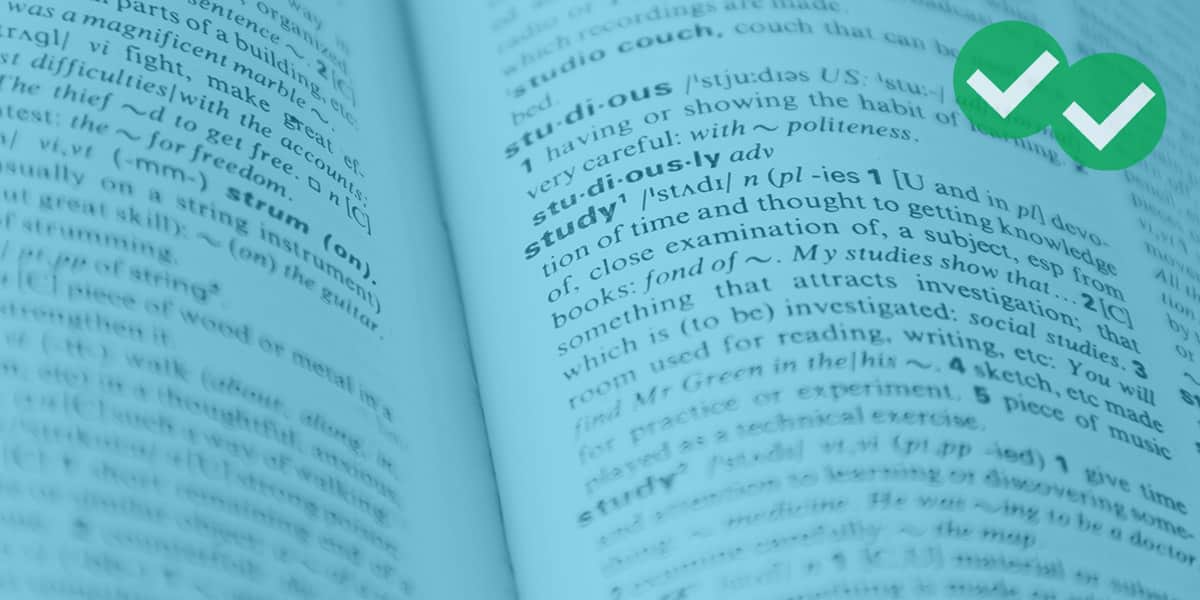
So you took the PSAT in your sophomore or junior year and you just got your scores back. Congratulations! Now you’re probably wondering: What is a good PSAT score?
To begin with, the PSAT score range is from 320 to 1520. The average PSAT score is around 920 (460 in Math and 460 in Reading and Writing), while an outstanding PSAT score (one that will qualify you as a National Merit Scholarship semi-finalist) is between 1420 and 1480.
Table of Contents
- How is the PSAT scored?
- What is a good PSAT score?
- When do PSAT scores come out?
- How will PSAT scores compare to my SAT scores?
- PSAT Score Range vs. SAT Score Range
- What is an average PSAT score?
- Next Steps: Sophomores
- Next Steps: Juniors
- FAQ
- A Final Word on PSAT Scores
How is the PSAT scored?
You’re sitting down with your PSAT score report. What does it mean?
The PSAT is score range runs from 320 to 1520, while the SAT is scored on a 400-1600 point scale. The College Board has deliberately made this scale similar but not identical to the SAT scoring scale. PSAT scores start and end lower specifically because the PSAT is just a little bit easier than the SAT.
What is a good PSAT score?
With the PSAT scoring scale set 80 points lower, the score you get on the PSAT will be–in theory–about the same as the score you’d get on the SAT. A 1300 on the PSAT is meant to be the same as a 1300 on the SAT, for instance.
At the higher end of the scale, exact equivalency is less clear. If you get the highest PSAT score, a perfect 1520, you might be able to get a perfect 1600 on the SAT. Since 1520 IS the highest PSAT score, a perfect PSAT score indicates an ability to get 1520 or higher on the SAT. Whether or not you do well on the PSAT, you should still study for the SAT.
Still, there are some decent ways to guess what is a good PSAT score based on a university’s SAT requirements. To see if your PSAT score is good as it relates to SAT scoring, check the SAT score requirements at schools you plan on applying to. If your PSAT score is the same as the required SAT score—or higher than it—your score on the PSAT could be considered “good.”
When do PSAT scores come out?
When you will get your PSAT scores back depends on when you took the test in October; however, you should get them between the end of October and mid-November.
You can find out if your scores are available by looking in your account on the College Board’s website. You’ll need to use your access code to get to those online scores. If you’re not sure what yours is, check with your school counselor/guidance counselor.
How will PSAT scores compare to my SAT scores?
Like a lot of students taking the PSAT, you may look at your PSAT score report and think, uh, okay…but what does that mean? The short answer is that how well you do on the PSAT is a strong indicator of how you might perform on the SAT. The PSAT is very similar to the SAT in terms of content and skills measured, although it’s a little easier. The main purpose of the PSAT is to help students get an assessment of their SAT readiness and college readiness.
But be forewarned—there is not a 100% correspondence between PSAT and SAT scores, nor is there any official charts of PSAT/SAT equivalencies.
The main reason for this is that the SAT tests more advanced content than the PSAT tests–info you’re likely to pick up by the end of junior year or the start of senior year (that’s why it’s called the “preliminary SAT”). While the composite scores, or overall scores, on the tests can be roughly compared (a 1200 total on the PSAT is very roughly comparable to a 1200 on the SAT if you put in the same coursework and preparation over the coming year), the individual sections’ subscores can’t really be compared in the same way.
That composite score comparison, by the way, is one reason the PSAT max score overall is 1520–the College Board is basically saying that even if you ace every PSAT question, it’s still no indicator you’ll get a 1600 on the actual SAT (though it is likely you’ll score high with enough test prep!).
A better way to look at your PSAT scores is to look at your percentile. Each student score report comes with corresponding percentiles, which tell you how well you did on the test compared to other students. If you scored in the 99th percentile, you scored better than 99 out of every 100 test-takers. Again, this would put you in a great position to ace the SAT, but it’s still no guarantee of a perfect 1600!
PSAT Score Range vs. SAT Score Range
Here’s a closer look at how the PSAT score range and SAT score range compare.
| PSAT | SAT | |
|---|---|---|
| Reading & Writing Score Range | 160 to 760 | 200 to 800 |
| Math Score Range | 160 to 760 | 200 to 800 |
| Total Score Range | 320 to 1520 | 400 to 1600 |
As we’ve already seen, the reason the PSAT is scored out of 1520 instead of 1600 is because it is an easier test. It’s made for high school sophomores and juniors, unlike juniors and seniors (like the real SAT is). The idea is that you’ll be able to better predict your SAT scores using your PSAT results this way.
Although, honestly, this probably creates more confusion than it is worth. And I am willing to bet if you score a perfect 1520 on the PSAT, you sure are going to set your sights higher for the SAT exam!
What is an average PSAT score?
The average PSAT score for high school students is around 460 in each section (Evidence-Based Reading and Writing, and Math), for a total average PSAT score of 920.
Next Steps: Sophomores
So you have your PSAT scores, you know what they mean in terms of benchmarks and percentiles–now what?
First of all, you may want to use your PSAT results from this year to aim for a National Merit Scholarship next year. While sophomores aren’t eligible for National Merit Scholarships, juniors are. If you scored pretty well on the test, you may want to do some prep to see if you can boost your score into the qualifying range for next year!
While it’s tempting to use your PSAT test scores to try to predict your SAT scores, the more useful way to use them is to identify your current strengths and weaknesses by studying your score report. Are you super strong in problem-solving but need an algebra brush-up? Great at critical reading but need some grammar review? Once you’ve identified these, you can zero in on your weak areas, boosting your strong ones, during your coming SAT prep.
Now is the perfect time to make a plan for your SAT prep. First, decide when to take the SAT based on your current preparation and goals. If you’ll be taken it in the coming year (i.e. in 11th grade), you may want to pick a longer-term SAT study schedule to help you reach those goals, too!
Next Steps: Juniors
If you’re starting junior year and just got your PSAT scores–or if you took the exam last year and haven’t thought about your PSAT scores in ages–that’s okay! It’s not too late to use them.
First things first: pull up that report, either the one available through your College Board account or the paper score report you received in the main or printed out.
Now that you have your scores in hand, it’s a great idea to take an SAT practice test to see how your current strengths and weaknesses still match up.
You may have a better idea of which colleges you want to attend than you did last year. If you don’t, start narrowing down your list of schools and researching their SAT scores to see how your PSAT and practice test scores compare.
Finally, choose an SAT date based on where you are now in terms of your PSAT/SAT scores and your college goals. Once you have those, zero in on an SAT study plan that can help you reach those goals in plenty of time for your applications!
FAQ
What PSAT score do I need for a National Merit Scholarship?
Yup, that jumble of letters after the “PSAT” part is pretty important–NMSQT stands for the “National Merit Scholarship Qualifying Test.” In other words, scoring over a certain threshold on the PSAT can qualify you for a National Merit Scholarship.
Keep in mind that ONLY juniors (11th graders) who take the PSAT are eligible for the National Merit Scholarship.
Unfortunately, it’s hard to predict exactly what the cut-off point is for the National Merit Scholarship program, given that varies by state and changes from year to year. Recently, state cut-offs for semi-finalists have varied from around 1420 to 1480 (we’re estimating because the NMS translates these onto their own 228 point scale, the “Selection Index Score”—on that scale, they look for NMSQT scores of between 214 to 223).
Should I submit my PSAT scores to colleges?
Nope! School admission departments are interested in your SAT scores, not your PSAT scores. However, getting a National Merit Scholarship is impressive—and taking the PSAT is likely to improve your score on the SAT, so there’s a double benefit!
A Final Word: What is a Good PSAT Score?
What’s a good PSAT score? The answer: one that helps you prep for the SAT. And if it qualifies you as a national merit scholar, all the better! So how do you reach these goals?
Before you take the test, make sure you know what’s on the PSAT. Then, review as much as you can in the time you have left and take at least one practice test. And with that done, you’ll be on your way to a great score!
All Magoosh SAT prep plans are digital SAT ready! Start studying today.





